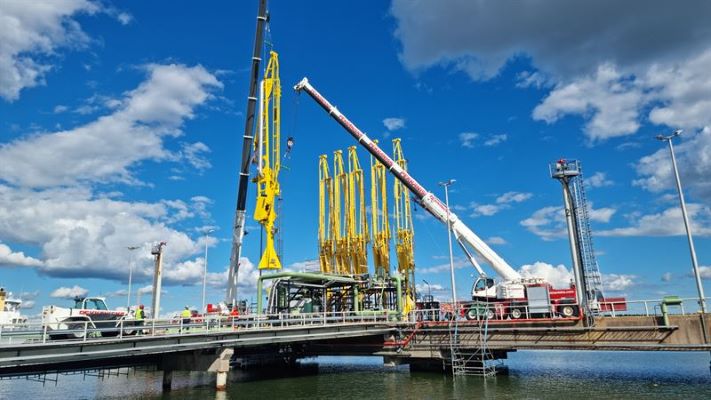This lays the foundation to handling larger amounts of liquefied raw materials to support Neste’s strategic aims to advance chemical recycling

Installation of new unloading arm for liquefied recycled raw materials at Neste Porvoo refinery harbor, Finland. Source: Neste
Neste is expanding its logistics infrastructure for liquefied recycled raw materials at its refinery in Porvoo, Finland, including materials such as liquefied waste plastic and liquefied rubber tires. This lays the foundation to handling larger amounts of liquefied raw materials to support Neste’s strategic aims to advance chemical recycling and transform the Porvoo refinery into a renewable and circular solutions hub.
The new logistics installations comprise dedicated unloading facilities: At the refinery’s harbor, Neste is building an unloading arm with a heating system as well as pipelines to connect the harbor with dedicated storage tanks. Unlike regular crude oil, liquefied waste plastic or discarded rubber tires require heating to stay liquid. At the same time, the systems need to come with higher resistance to corrosion. In addition to the unloading arm and pipelines, Neste is also building a vapor recovery unit, contributing to emission control of the operations.
“The transformation of our Porvoo refinery into a renewable and circular solutions hub will require many individual steps and adjustments,” explains Jori Sahlsten, Senior Vice President of Refinery and Terminal Operations at the Porvoo refinery in Neste’s Oil Products business unit. “The new logistics infrastructure is one of these steps. It puts us in a good position to process larger and continuous volumes of liquefied recycled raw materials. This will be needed when we start using the new upgrading unit, which is able to process 150,000 tons of liquefied waste plastic per year.”
The new logistics infrastructure is expected to be completed in 2024. It will, therefore, be available when Neste finishes construction of its liquefied waste plastic upgrading unit at the Porvoo refinery, which is currently being built as part of the project PULSE, planned to be finalized during 2025. At the upgrading unit, the liquefied raw materials are turned into high-quality feedstock for the plastics and chemicals industry.
Subscribe to our newsletter & stay updated.